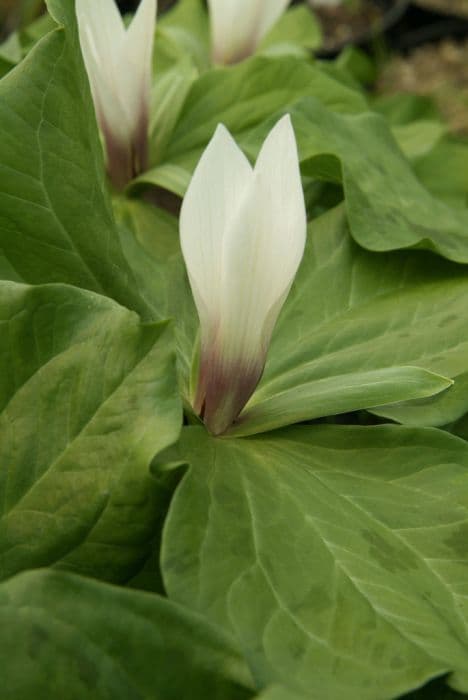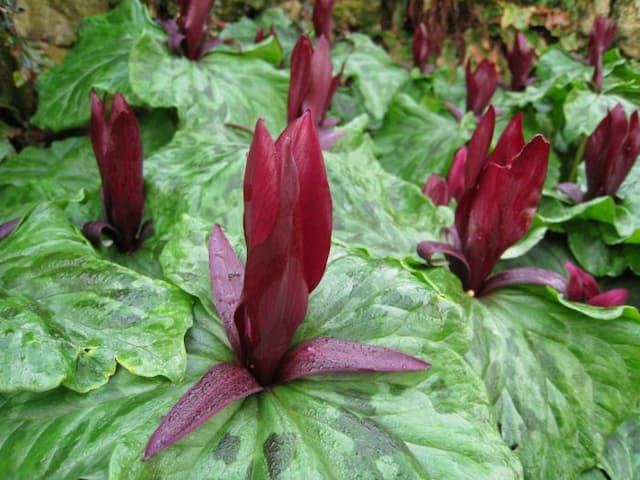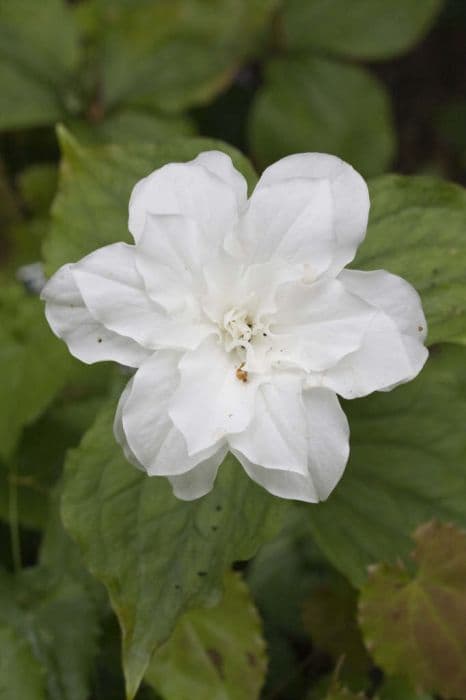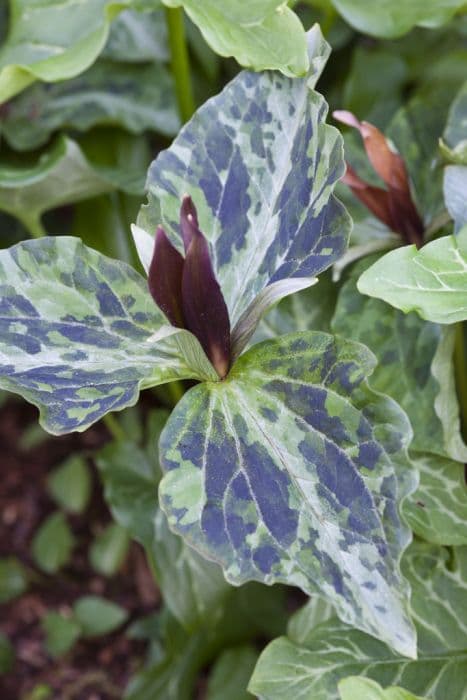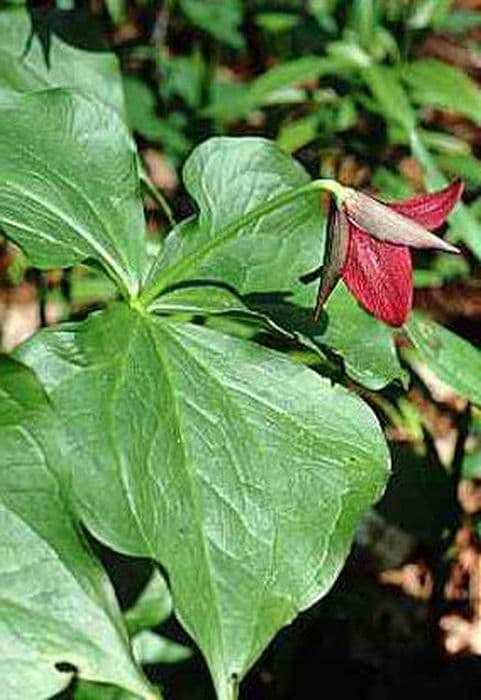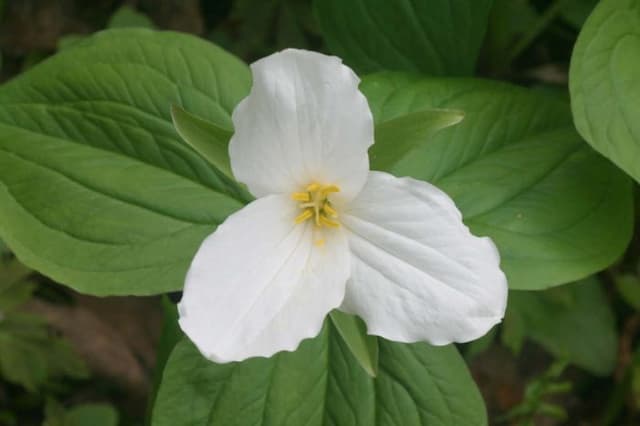Tibetan Ypsilandra Ypsilandra thibetica

ABOUT
Ypsilandra thibetica, more commonly referred to as just Ypsilandra, is a visually striking perennial plant with distinct characteristics. It is typically known for its rosettes of lance-shaped, glossy green leaves that form an attractive ground cover. Early in the season, it produces stems topped with delicate clusters of bell-shaped flowers. The flowers of Ypsilandra are usually pristine white and sometimes exhibit a slight tint of lavender, which can add a subtle hint of color to the plant's appearance. Each blossom is comprised of elongated petals that flare slightly at the tips, giving a gentle starry appearance when viewed from above. These flowers are arranged in a loose spike, creating a soft, brush-like appearance that is visually pleasing. The foliage remains an integral part of the plant's charm throughout the growing season, long after the blooms have faded. The leaves are smooth, with their margin gently undulating, and contribute to the plant's lush and verdant ground presence. Overall, Ypsilandra has a delicate and refined appearance, making it an appealing addition to garden spaces that focus on subtle beauty and textural plant compositions.
About this plant
 Names
NamesFamily
Melanthiaceae
Synonyms
Tibet Ypsilandra, Tibetan Ypsilandra
Common names
Ypsilandra thibetica.
 Toxicity
ToxicityTo humans
Ypsilandra thibetica, more commonly known as ypsilandra, does not have a well-documented profile of toxicity to humans in scientific literature. As such, it's not widely recognized as a poisonous plant to humans. However, as with many plants not commonly used for consumption, it is usually advisable to avoid ingesting any part of plants that are not known for being edible, as they may cause gastrointestinal discomfort or other mild reactions. If you suspect poisoning from any plant, seek medical attention.
To pets
Ypsilandra thibetica, or ypsilandra, does not appear to have a significant report of toxicity to pets in existing resources. This indicates that it may not be commonly considered toxic to pets such as dogs and cats. Nevertheless, it is generally recommended that pets do not ingest plants not specifically intended for animal consumption, as they could experience stomach upset or other adverse reactions. If you observe signs of distress in a pet after ingesting this plant, consulting a veterinarian is advisable.
 Characteristics
CharacteristicsLife cycle
Perennials
Foliage type
Evergreen
Color of leaves
Green
Flower color
White
Height
6-12 inches (15-30 cm)
Spread
6-12 inches (15-30 cm)
Plant type
Herb
Hardiness zones
7
Native area
China
Benefits
 General Benefits
General Benefits- Ornamental Value: Ypsilandra thibetica is valued for its attractive, early spring flowers which add beauty to garden landscapes.
- Drought Tolerance: Once established, it can tolerate periods of drought, making it suitable for xeriscaping or gardens in drier climates.
- Cold Resistance: It is able to withstand cold temperatures, making it a strong candidate for gardens in cooler regions.
- Shade Loving: Ypsilandra thibetica thrives in shaded environments, providing an option for beautifying less sunny areas.
- Soil Adaptability: It can adapt to a variety of soil conditions, which makes it versatile for different garden setups.
- Low Maintenance: The plant generally requires minimal care once established, making it suitable for low-maintenance landscaping.
- Erosion Control: Its root system helps stabilize soil, which can prevent erosion on slopes and in other vulnerable areas.
- Wildlife Support: The early spring flowers provide an important nectar source for pollinators such as bees when few other plants are in bloom.
 Medical Properties
Medical Properties- Anti-inflammatory: Ypsilandra thibetica may have properties that help reduce inflammation.
- Antimicrobial: There is some evidence to suggest that extracts from this plant may have antimicrobial effects against certain pathogens.
- Antioxidant: The plant may contain compounds with antioxidant properties that help in protecting cells from oxidative stress.
- Anti-rheumatic: Traditional use suggests potential effectiveness in relieving symptoms of rheumatic conditions.
 Air-purifying Qualities
Air-purifying QualitiesThis plant is not specifically known for air purifying qualities.
 Other Uses
Other Uses- Ypsilandra thibetica, also known as Tibet Ypsilandra, can be used as a ground cover in gardens due to its spreading foliage and attractive flowers.
- Its unique flowering structure makes Tibet Ypsilandra a candidate for study in botanical education and plant morphology research.
- Tibet Ypsilandra is used in horticulture for breeding purposes, to potentially create hybrids with other species for ornamental purposes.
- The blooms of Tibet Ypsilandra can be utilized as a natural dye source for fabrics and paper, offering a subtle coloring.
- The plant can serve as an indicator species for ecological research, as its presence might be an indicator of certain soil conditions.
- Tibet Ypsilandra can be used as a companion plant to deter certain pests, although specific pests deterred by this species are not well documented.
- In colder region gardens, Tibet Ypsilandra can function as a seasonal weather indicator, as it emerges and flowers after the last frost.
- Photographers and artists may find interest in Tibet Ypsilandra for its aesthetic qualities, using it as a subject in their works.
- The plant can play a role in conservation efforts, being propagated and spread to stabilize soil in areas prone to erosion.
- As a low-maintenance plant, Tibet Ypsilandra is a choice for urban greening projects where care resources are limited.
Interesting Facts
 Feng Shui
Feng ShuiThe plant Ypsilandra thibetica is not used in Feng Shui practice.
 Zodiac Sign Compitability
Zodiac Sign CompitabilityThe plant Ypsilandra thibetica is not used in astrology practice.
 Plant Symbolism
Plant Symbolism- Purity: Ypsilandra thibetica's delicate white flowers can symbolize purity, representing cleanliness and innocence.
- New Beginnings: The emergence of its blooms in early spring is often associated with new beginnings and the start of a fresh cycle of life.
- Hope: As a plant that pushes through the last snow of winter, it can symbolize hope and the promise of coming warmth and abundance.
 Water
WaterTibetan Lily should be watered whenever the top inch of soil feels dry to the touch, which typically means once every week or so, depending on the ambient humidity and temperature. It's important to water deeply, so the moisture reaches the roots. Approximately half a gallon of water should be administered to a medium-sized plant to ensure thorough saturation. During the winter months, reduce watering to every two weeks or when the soil is dry, as the plant enters a dormant period and requires less moisture.
 Light
LightTibetan Lily thrives in partial shade where it can receive bright, indirect light. The best spot for this plant is in an area that mimics its native forest floor habitat, so placing it near a north-facing window or under the dappled shade of larger plants would be ideal. Direct sunlight should be avoided as it might scorch the leaves.
 Temperature
TemperatureThe Tibetan Lily prefers cool to moderate temperatures, with an ideal range between 60 to 75 degrees Fahrenheit. The plant can survive short periods at lower temperatures, but it should not be exposed to anything below 50 degrees Fahrenheit. On the higher end, temperatures exceeding 80 degrees Fahrenheit may stress the plant and should be avoided.
 Pruning
PruningPruning helps maintain the shape and health of the Tibetan Lily. Dead or yellowing leaves should be removed to encourage healthy new growth and to prevent any potential diseases. Light pruning can be done at any time, but major pruning should be done in early spring before new growth begins. This usually means pruning once a year or as necessary to remove damaged foliage.
 Cleaning
CleaningAs needed
 Soil
SoilBishop's Hat prefers a well-draining soil mixture with high organic matter content. A mix of loam, peat, and sand is ideal, providing both aeration and moisture retention. The soil pH should be slightly acidic to neutral, ranging from 6.0 to 7.0 for optimal growth.
 Repotting
RepottingBishop's Hat should be repotted every 2-3 years or when it becomes root-bound. It is best to repot in the spring, just before the growing season begins. This allows the plant to establish in the new soil before the rapid growth phase.
 Humidity & Misting
Humidity & MistingBishop's Hat thrives in moderate to high humidity levels. Aiming for a humidity range of 50-70% will mimic its natural environment and support its growth. It's not tolerant of dry air environments, so maintaining adequate humidity is crucial.
 Suitable locations
Suitable locationsIndoor
Place Bishop's Hat in bright, indirect light and ensure humidity.
Outdoor
Plant in dappled shade with moist, well-drained soil.
Hardiness zone
5-9 USDA
 Life cycle
Life cycleYpsilandra thibetica, commonly known as Tibet Ypsilandra, begins its life as a seed, which germinates in moist, well-drained soil in partial to full shade. The seedling stage is characterized by the emergence of a small rosette of leaves that gradually develop into a basal rosette as the plant matures. During the vegetative stage, the plant forms a clump of lanceolate, dark green leaves, and prepares for the flowering stage. The reproductive stage is marked by the blooming of white to pale pink, bell-shaped flowers on upright stems in early spring, which are pollinated by insects. After pollination, the plant sets seed in the form of a capsule that contains numerous small seeds, completing the sexual reproductive cycle. The plant is a perennial, so after the flowering and seed setting, it enters a period of dormancy during the colder months and resumes growth in the following spring.
 Propogation
PropogationPropogation time
Early Spring
Propogation: Ypsilandra thibetica, commonly referred to as Tibet Ypsilandra, is often propagated through division, a method that is typically carried out in the spring just before new growth begins. To propagate Tibet Ypsilandra by division, carefully dig up the plant, ensuring as little root disturbance as possible. Once excavated, gently tease apart the clumps of roots and shoots, making sure that each new section has a healthy portion of roots attached. These individual sections are then replanted in a well-draining soil mix at the same depth they were previously growing. It's important to maintain consistent moisture without waterlogging the plants and to provide a shaded or semi-shaded environment, as direct sunlight can be detrimental to the newly divided plants. Aftercare involves regular watering until the plants are established and resuming the usual care routine for Tibet Ypsilandra as they grow.
